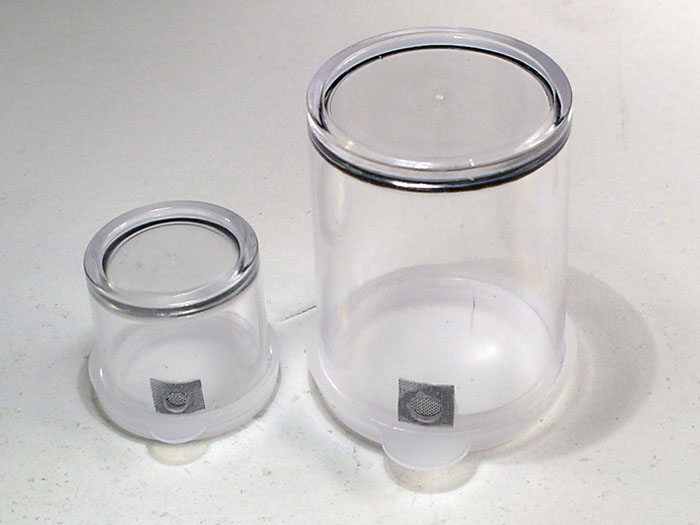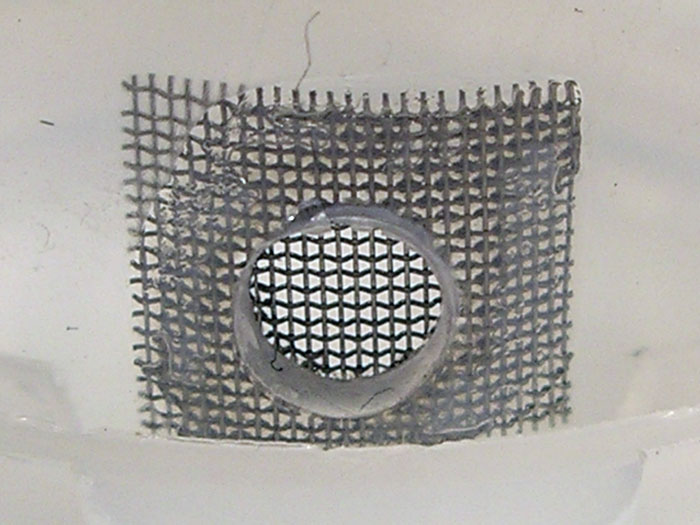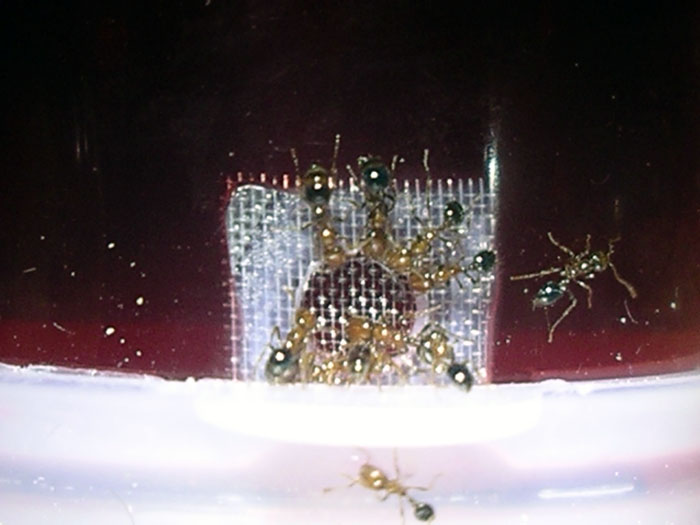I found ant waterers to save me lots of time and to come in very handy. I will share how I make them. Please remember to change the contents regularly and give the waterers a good wash in between uses.
Here are two tutorials: Gravity feeder and Wick feeder
For either feeder, get an airtight container. Mine come from dollar stores and almost any place that carries beads, paint, and craft supplies.
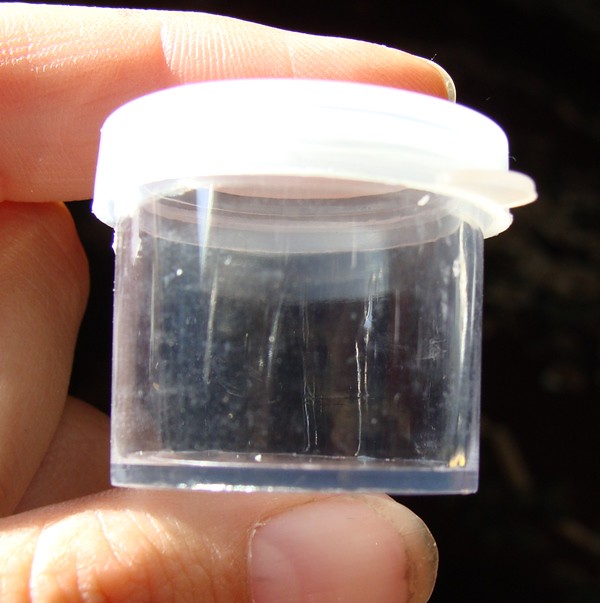
Gravity Feeder:
There are two different types of lids that are very common. If possible, choose the one on the left - without the inside lip. Or you can trim/cut the inside lip to make it work.
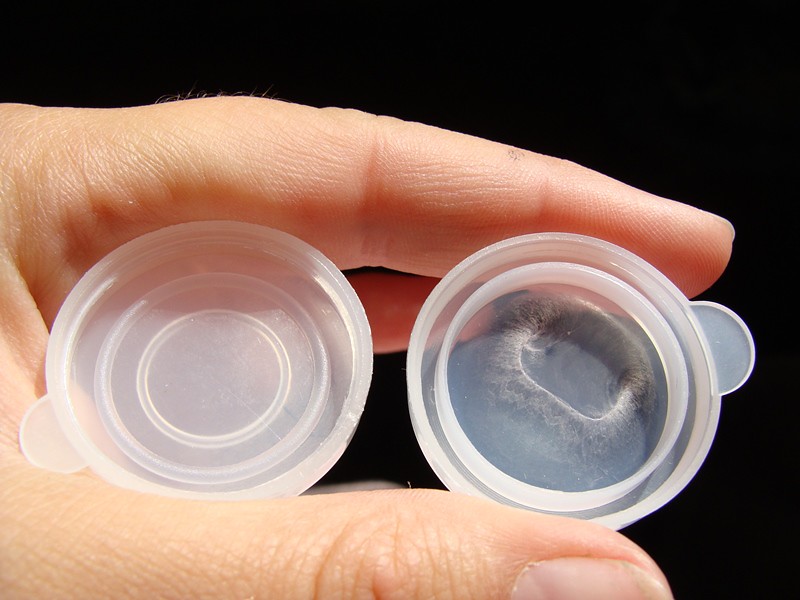
Get a drill and drill bit. I use an 3/32 drill bit. While the lid is on, start the drill hole as close to the lid as possible. Remove the lid and finish drilling the hole. While the bit is in the hole tilt the container so the bit is at an angle. It helps keep the water/feed right at the hole. (I have tried smaller bits, they don't work quite as well)
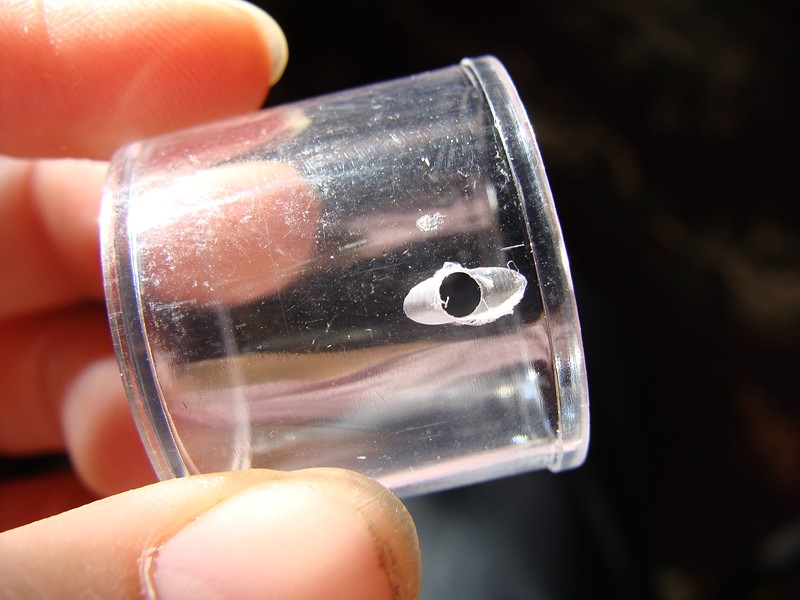
See the angle? The container opening is on the right. It allows air to more easily enter the container.

Get some mesh, I just used some leftover plastic screen door mesh (use stuff that won't rust, so try to avoid metal unless it is stainless teel). The white plastic craft mesh also works well.
Cut it into pieces about 1cm wide by 1.5cm tall. Size doesn't really matter, just make sure it has ample coverage of the hole drilled.
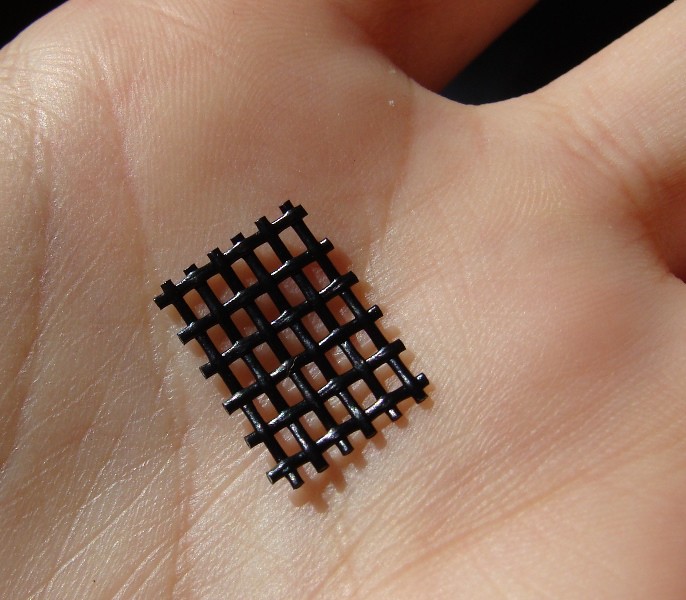
Get some aquarium silicone. Add a dab to both sides of the hole as well as above and below.

Take a piece of mesh, fold it in half for a second. This will allow it to fit more snuggly to the curve of the container.
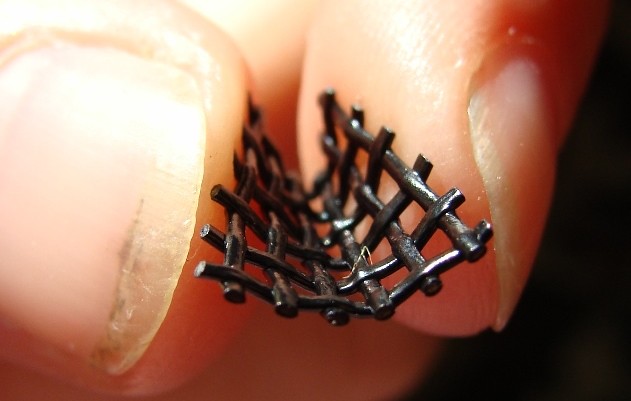
Place the mesh on the silicone and pat it down. I usually use tweezers for this, but your finger will work. Just don't move it side to side as the silicone may block the holes in the mesh; and you don't want the mesh in the hole opening plugged. If the mesh has rectangular holes, try to have them pointing up and down. You can add extra sliicone if you want, I added more to the top section after taking this picture. Ensure that the bottom of the mesh is above the lip of the container or you will have problems later.
[img]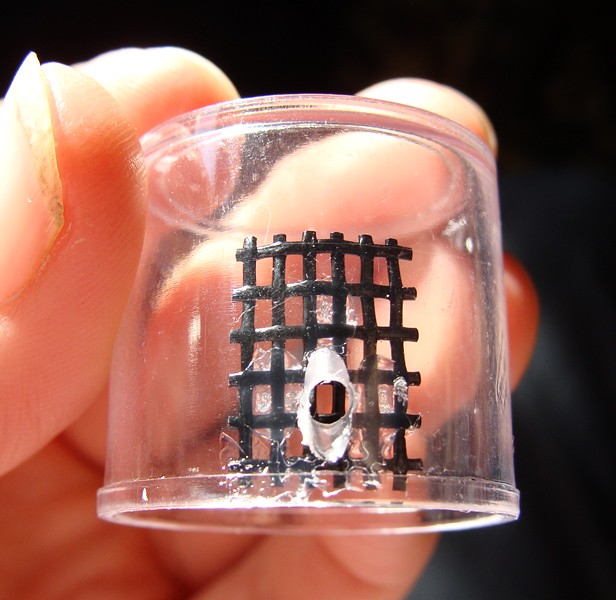 [/img
[/img
Leave the lid off and let it dry at least 48 hours before using it.
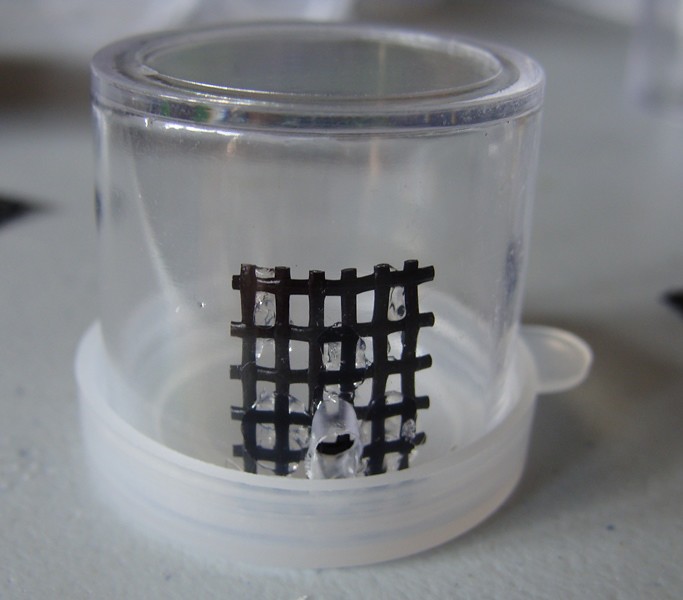
I have used this with water, honey water, and hummingbird nectar with almost no problems. The only problem I have ever encounted was when I didn't have the mesh and very small ant species would crawl inside of the container if there was an air bubble and I would have to rescue them when the bubble went up. The mesh and the slightly larger drill hole on an angle seems to eliminate the problem.
If you don't have mesh, you can just put a small twist of cotton in the hole, just tuck one end in the hole and the other end between the lid and the container.
Wick Feeder
You will need a container, sharp object, and a wick. The wick can be made from various materials, I used a thin piece of chamois cloth, but yarn, cloth, cotton or many other absorbent materials also work. Here is another thread discussing this idea.
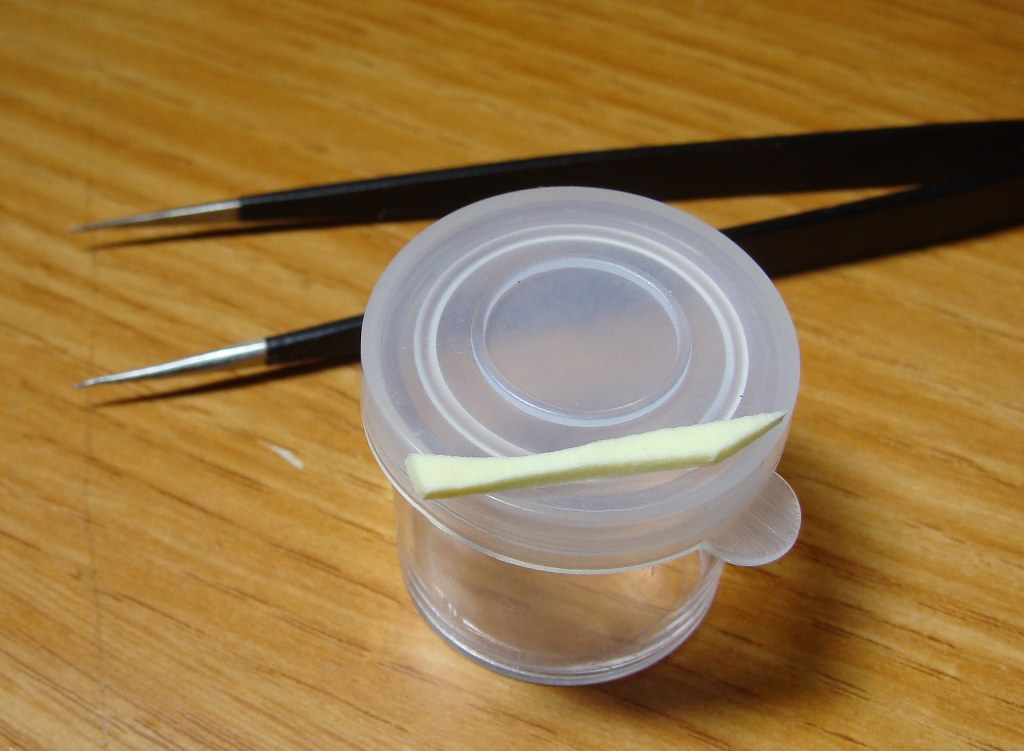
Take the sharp object and make a hole that will fit the wick material snuggly. (I used anti-static tweezers, but a knife, exacto blade, or even a nail will work. You can even drill a small hole.)
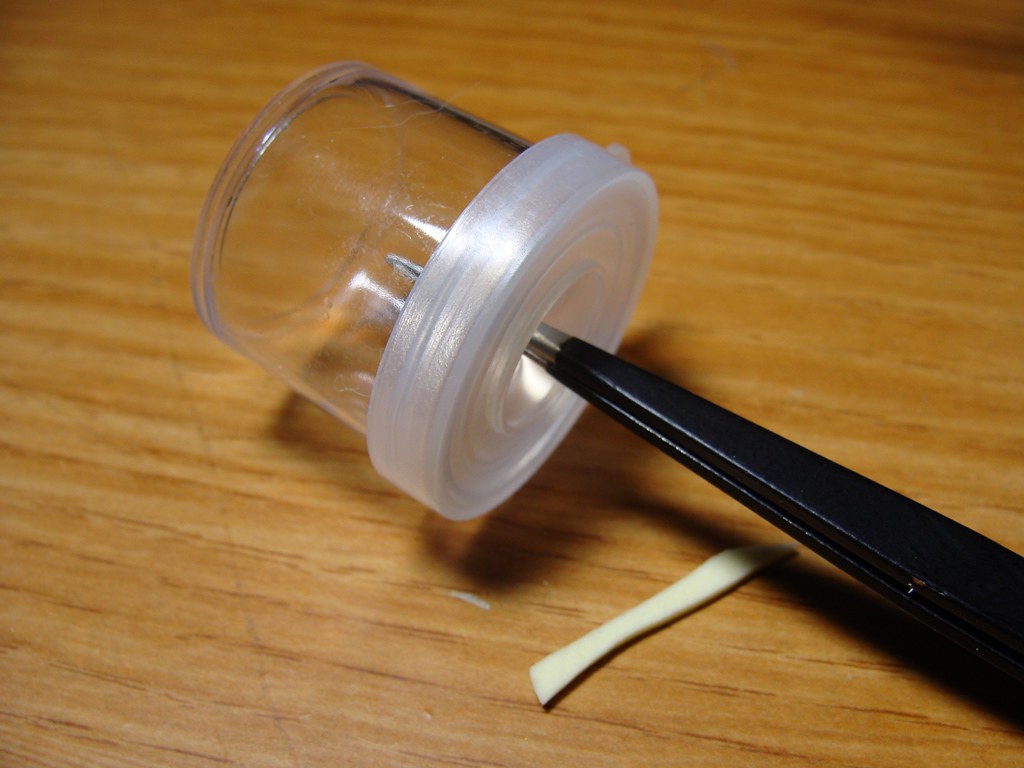
Place the wick in the hole. It should fit snuggly, but not so tight as to cut off the wicking action. Watch it closely for the first few days to ensure it is damp, but the ants can not get inside.
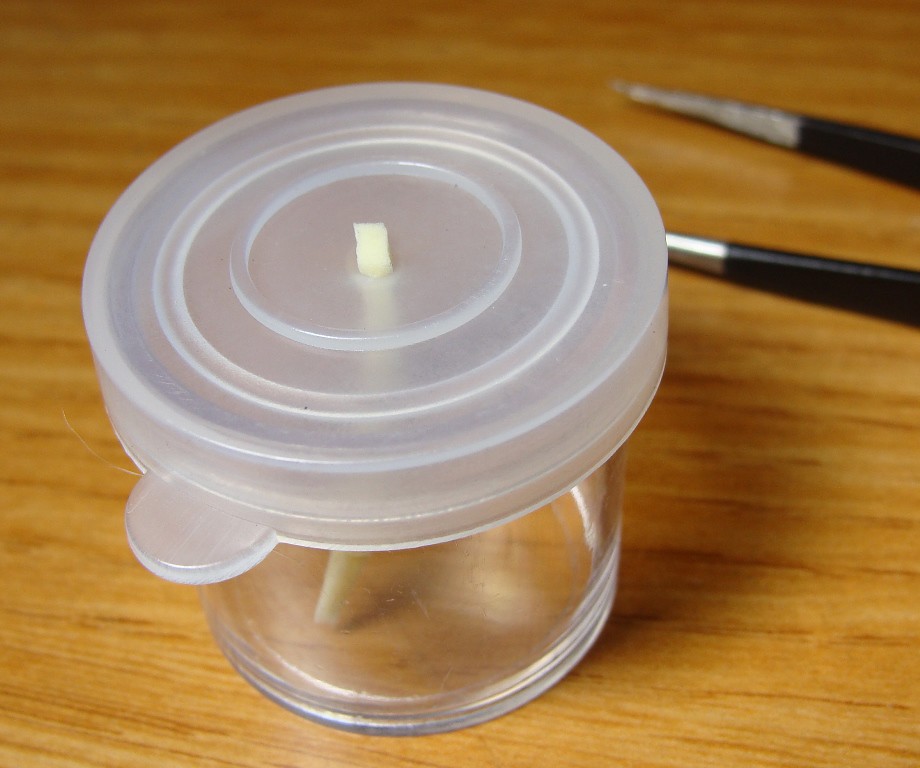
Add nectar, sugar water, or water.
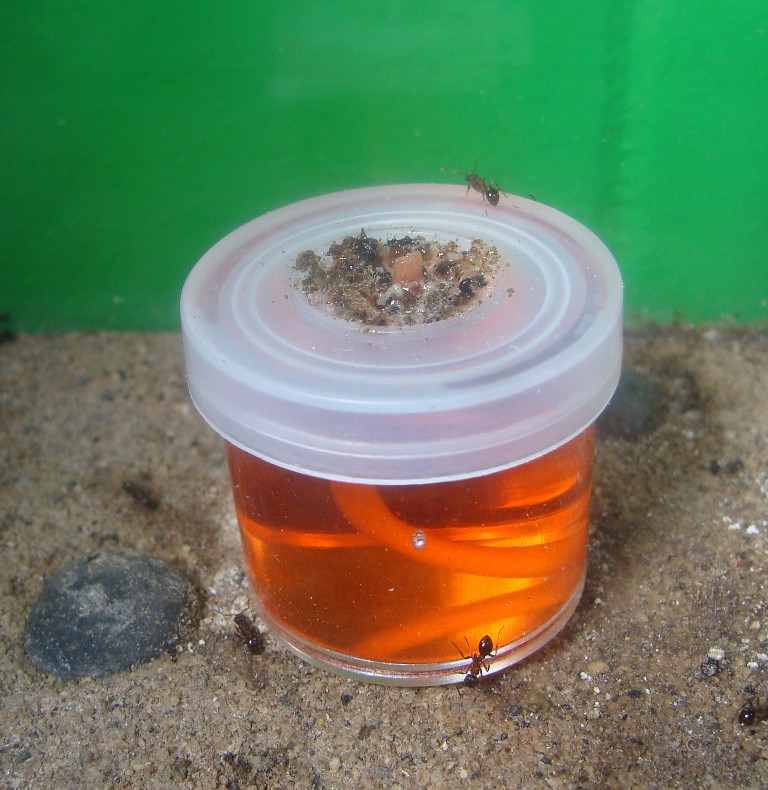
Video on how to make both types of waterers:
Edited by Crystals, July 19 2017 - 7:16 PM.






